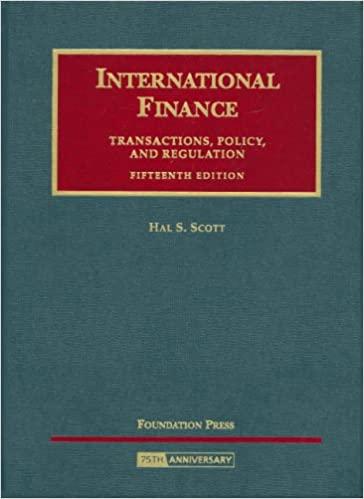Answered step by step
Verified Expert Solution
Question
1 Approved Answer
Taussig Technologies Corporation ( TTC ) has been growing at a rate of 2 0 % per year in recent years. This same growth rate
Taussig Technologies Corporation TTC has been growing at a rate of per year in recent years. This same growth rate is expected to last for another years, then decline to gn
The data has been collected in the Microsoft Excel file below. Download the spreadsheet and perform the required analysis to answer the questions below. Do not round intermediate calculations.a If $ and what is TTCs stock worth today? Round your answer to the nearest cent.
$
per share
What are its expected dividend, and capital gains yields at this time, that is during Year Round your answers to two decimal places.
Dividend yield:
Capital gains yield:
capital gains yield to two decimal places.
The price will
to $
per share.
The dividend yield will
to
The capital gains yield will
to
Round your answers to two decimal places.
Dividend yield:
Capital gains yield:
Nonconstant Growth and Corporate Valuation
Last dividend, D $
Required rate of return, rs
Supernormal growth rate, gs
Normal growth rate, gn
Period of supernormal growth years
a Finding TTCs stock worth today, its expected dividend, and capital gains yields
Year Dividend Formulas
#NA
#NA
Horizon value at the end of year #NA
Stock price #NA
Dividend yield during year #NA
Capital gains yield during year #NA
b Finding the price, dividend yield, and capital gains yield
Period of supernormal growth years
Year Dividend
#NA
#NA
#NA
#NA
#NA
Horizon value at the end of year #NA
Stock price #NA
Dividend yield during year #NA
Capital gains yield during year #NA
c Finding TTCs dividend and capital gains yields once its period of supernormal growth ends
Dividend yield #NA
Capital gains yield #NA
d Finding the stock value based on the corporate valuation model approach
Year FCF in millions
$
$
$
$
$
$
$
$
$
$
WACC
Growth rate after the th year, gn
Number of common stock outstanding millions
Number of preferred stock millions
Value of nonoperating assets $ millions
Market value of debt $ millions
HV of FCF at the end of year millions #NA
PV of FCF at year millions #NA
PV of HV at year millions #NA
Market value of operations millions #NA
Market value of nonoperating assets millions #NA
Total corporate value millions #NA
Less: market value of debt millions #NA
Intrinsic value of common equity millions #NA
Intrinsic value per share #NA

Step by Step Solution
There are 3 Steps involved in it
Step: 1

Get Instant Access to Expert-Tailored Solutions
See step-by-step solutions with expert insights and AI powered tools for academic success
Step: 2

Step: 3

Ace Your Homework with AI
Get the answers you need in no time with our AI-driven, step-by-step assistance
Get Started


